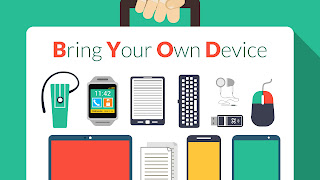Twitter Feed
Amazon’s Jeff Bezos on Cloud Computing
Amazon’s Jeff Bezos on Cloud Computing How and when Amazon began its cloud computing effort.Why Amazon has become an innovator with Amazon Web Services and how it relates to their…
Dataline, IBM, Google, Northrop Grumman on Cloud Computing
My company, Dataline LLC, in cooperation with IBM, Google and Northrop Grumman Mission Systems, is sponsoring an educational series entitled “Cloud Computing in a Netcentric Environment“. The series will be…
EMC Studies Cloud Computing Security
Storage firm EMC has joined the Daoli Trusted Infrastructure Project which conducts research into “trust and assurance” in cloud computing environments. The team’s research will focus on cloud computing, trusted…
The Cloud Computing Marketplace
For explaination and details see Understanding the Cloud Computing/SaaS/PaaS markets: a Map of the Players in the Industry by Peter Laird, Kent Dickson, and Steve Bobrowski from Oracle. Update: Please…
Key cloud computing concerns by CXO’s
Key cloud computing concerns by CXO’s attending the Enterprise 2.0 Conference in Boston were addresed in a June 9th panel of executives from Google, Amazon Web Services (AWS), and Salesforce.com.…
IBM Cloud Computing Center
On June 5th, IBM announced it will establish the first Cloud Computing Center for software companies in China, which will be situated at the new Wuxi Tai Hu New Town…
EUCALYPTUS – An Open Source Cloud Computing Platform
Elastic Utility Computing Architecture for Linking Your Programs To Useful Systems (EUCALYPTUS) is a new project that seems to be trying to put an “open source” flavor to cloud computing.…
The Honorable John G. Grimes Speaks about Cloud Computing
Today I had the pleasure of hearing The Honorable John G. Grimes, Assistant Secretary of Defense for Networks and Information Intergration and Department of Defense CIO, speak on some key…
Amazon leads Google into the cloud (So what else is new)
In this May 1, 2008 Globe and Mail Update article, Mathew Ingram provides an excellent comparison of Amazon and Google’s cloud computing initiatives. Bottom line: Amazon leads the pack with…
Web 2.0 Expo – What is Cloud Computing?
For some interesting views, take a look at these video interviews on what is cloud computing. These were done during the recent Web 2.0 Expo, April 22-25 in San Francisco,…
- Increased employee mobility (63%), satisfaction (56%) and productivity (55%) dominate as the top drivers of BYOD. These employee related drivers are considered more important than reduced costs (47%).
- Security (39%) and employee privacy (12%) are the biggest inhibitors of BYOD adoption.
- 20% of surveyed organizations have suffered a mobile security breach, primarily driven by malware and malicious WiFi.
- Security threats to BYOD impose heavy burdens on organizations’ IT resources (35%) and help desk workloads (27%).
- Despite increasing mobile security threats, data breaches and new regulations, only 30% of organizations are increasing security budgets for BYOD in the next 12 months and 37% have no plans to change their security budgets.
- 72% – Data leakage/loss
- 56% – Unauthorized access to company data and systems
- 54% – Downloading of unsafe apps or content
- 52% – Malware
- 50% – Lost or stolen devices
- 49% – Vulnerability exploitation
- 48% – Lack of control on endpoint security
- 39% – Infrequent software updates
- 38% – Compliance
1. Create your policy before procuring technology: To effectively use mobile device management (MDM) technology for employee owned devices Policy must precede technology. Also note that these policies will have broad corporate-wide implications for IT, HR, legal, and security.
- Mobile device management
- Application security assessments
- Application testing services
- Application source code security assessments; and
- Embedded device security.
This post was brought to you by IBM Global Technology Services. For more content like this, visit ITBizAdvisor.com.
( Thank you. If you enjoyed this article, get free updates by email or RSS – © Copyright Kevin L. Jackson 2017)
Cloud Computing
- CPUcoin Expands CPU/GPU Power Sharing with Cudo Ventures Enterprise Network Partnership
- CPUcoin Expands CPU/GPU Power Sharing with Cudo Ventures Enterprise Network Partnership
- Route1 Announces Q2 2019 Financial Results
- CPUcoin Expands CPU/GPU Power Sharing with Cudo Ventures Enterprise Network Partnership
- ChannelAdvisor to Present at the D.A. Davidson 18th Annual Technology Conference
Cybersecurity
- Route1 Announces Q2 2019 Financial Results
- FIRST US BANCSHARES, INC. DECLARES CASH DIVIDEND
- Business Continuity Management Planning Solution Market is Expected to Grow ~ US$ 1.6 Bn by the end of 2029 - PMR
- Atos delivers Quantum-Learning-as-a-Service to Xofia to enable artificial intelligence solutions
- New Ares IoT Botnet discovered on Android OS based Set-Top Boxes


